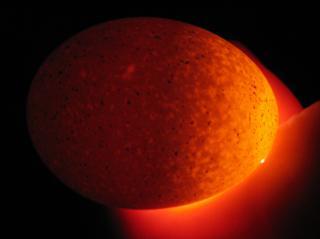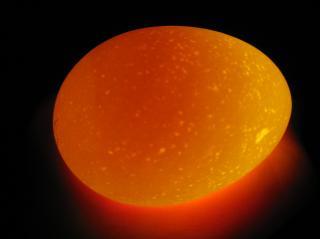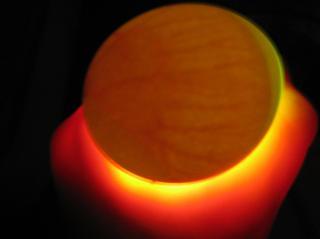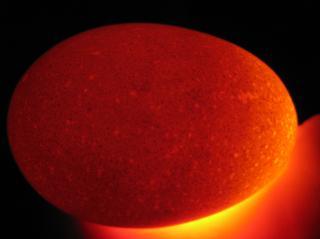This is my first time incubating eggs. I became overly curious last night and candled 6/21 eggs, 2 of each breed/type (Speckled Sussex, Welsummer, Easter Egger). Some just appeared to have a light/clear area and a clump-ish darker area at the large/upright end of the egg, as in the Welsummer and Sussex pictures. In the others, I could see clear veining as in the Easter Egger pic below!!!!!!!!!!!!!!!!!!! Ahem. Excuse me. Anyhow, are the clump-ish eggs developing?
Welsummer 1

Speckled Sussex 4

EE 6

I also weighed the eggs. They currently weigh between 91.3-96.7% of their original weights before incubation. Welsummer 1 pictured in my above post (clumpy dark area) has decreased in weight from 64 to 60 grams (93.75% of original weight). EE 6 with the veining has decreased from 65 to 60 grams (92.3% of original weight). Is this a good rate? I know it should be 11-15% throughout the hatch; if I assume 12.5% as optimal (someone posted on another thread; I forget where/who) and they lose weight at a steady rate, then these should have only lost 4.17% and are losing weight too quickly, but I think they look pretty good. I've kept the humidity at about 40%. Based on this rate of weight loss, is that too high, too low, or okay?
Thank you for your help!
Welsummer 1

Speckled Sussex 4

EE 6

I also weighed the eggs. They currently weigh between 91.3-96.7% of their original weights before incubation. Welsummer 1 pictured in my above post (clumpy dark area) has decreased in weight from 64 to 60 grams (93.75% of original weight). EE 6 with the veining has decreased from 65 to 60 grams (92.3% of original weight). Is this a good rate? I know it should be 11-15% throughout the hatch; if I assume 12.5% as optimal (someone posted on another thread; I forget where/who) and they lose weight at a steady rate, then these should have only lost 4.17% and are losing weight too quickly, but I think they look pretty good. I've kept the humidity at about 40%. Based on this rate of weight loss, is that too high, too low, or okay?
Thank you for your help!






